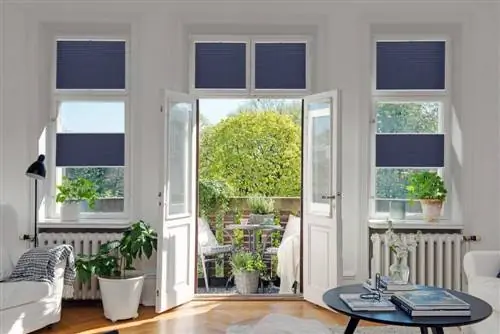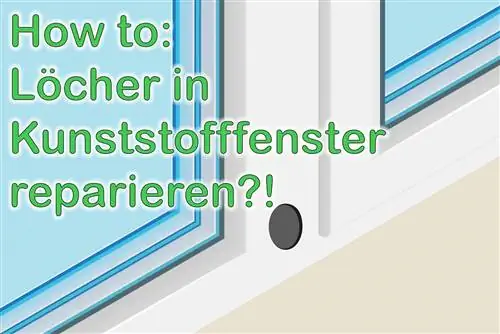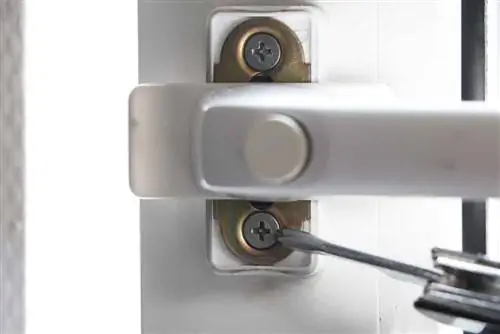- Author admin [email protected].
- Public 2023-12-17 03:39.
- Last modified 2025-06-01 06:48.
The trade probably has the largest number of assembly forms and accessories available when it comes to pleated blinds. Whether screwed, clamped, glued, on the wall, ceiling or window - in principle, a pleated blind can easily be installed anywhere in front of the window area.
Custom installation not always possible
As diverse as the types of attachment are, the different types of windows are just as numerous. And it is not uncommon for the installation accessories chosen to later turn out to be a real mistake for the in-house window type. A certain amount of care is also required in rented apartments and at roof windows. Because not everything is permitted everywhere and some desired installation sometimes has to be abandoned in advance for physical or structural reasons.

Nevertheless, compared to all other window decorations, it is precisely pleated blinds that provide solutions, even in very difficult cases, for successfully and solidly installing privacy and sun protection.
Mounting options at a glance
As with other window decorations, screw installation is often the most common. There are also various drill-free variants.
Wall, ceiling, soffit:
Classic screwing with drill holes in the masonry
Mounting options for window sashes:
- Screw connection in the glazing bead
- Adhesive panels in the glazing bead, on the frame or on the pane
- Mounting with clamp holder
Special case of rental apartments
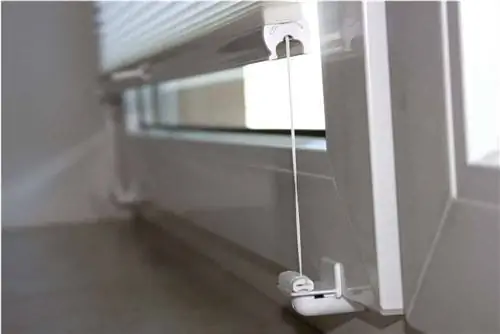
A particularly important decision criterion is the living situation. Anyone who owns an apartment or house basically has a free hand. Tenants, in turn, are liable for long-term damage to the rental property. Attaching a pleated blind to the masonry is harmless because shelves or cupboards are also mounted here and the drill holes are easy to remove. However, if drilled window installations are planned, permission should be obtained from the renting party, otherwise expensive repair costs may be incurred. For rental properties, the only option - in addition to wall screwing - is often clamp or adhesive mounting.
Pleated blinds on aluminum windows and wooden windows
Some assemblies are intended for conventional plastic windows. This includes, above all, drill-free fastening with clamp supports and adhesive plates. For windows that differ in structure, such as thinner aluminum windows, clamp brackets can quickly cause problems because the mounting brackets are always designed for wider window thicknesses. Clamp brackets often do not hold on wooden windows because installation requires not only sufficient sash thickness but also a rubber seal on the back of the window, which is the norm for plastic windows. If the rear seal is missing, the clamping bracket simply has no hold.
Aluminum and wooden windows also prove to be problematic with some adhesive installations, especially when the adhesive panels are to be attached to the frame of the window sash. The adhesive usually does not stick to aluminum or wood.
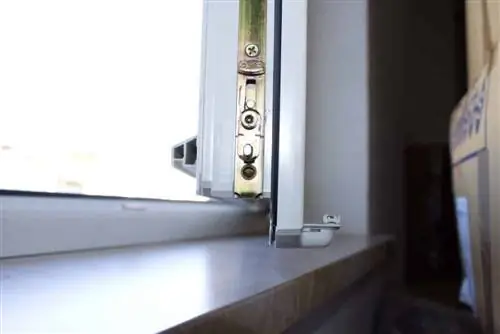
Practical system solutions for installing pleated blinds are either narrow adhesive strips that are stuck to the side of the window pane or the standard screw connection, which, depending on the window installation, is in the masonry, on the ceiling, in the reveal or even on the window itself can be carried out.
For protective functions, installation close to the window is required
Pleated blinds are often used to go beyond pure window decoration to specifically eliminate light-related problems - for example, if a room is affected by very high levels of light or if it regularly overheats even at milder temperatures. Typical functional pleated blinds include pleated blinds with a 100 percent blackout function or mother-of-pearl and honeycomb pleated blinds with a heat protection function.
There are certain restrictions for assembly. Mounting on a reveal, ceiling or wall prevents the optimal use of the protective effect. In order to ensure a perfect protective function, a pleated blind must be installed on the window sash in order to keep the distance between the pleated fabric and the glass pane as small as possible so that light and heat do not penetrate through the side edges. The available mounting types are nevertheless quite diverse in selection: screw mounting on the window can also be implemented, as can clamping and adhesive devices.
The equipment of special window shapes
A special feature of pleated blinds is that they can be precisely adapted to windows with special shapes. These include, among other things, trapezoidal windows, round windows or, for example, triangular windows. This can be achieved primarily through various rail systems in which pleated fabric can be framed. There are freely hanging, tensioned or fixed pleated blind systems for the various shapes. The mounting options are again quite varied so that you can find exactly the right mounting option for each window.
Roof windows: Drill-free installations make sense?

Slanted roof windows also represent a certain special case when it comes to window furnishings. Freely hanging curtains and drapes, for example, are completely impractical here, especially since they - even if they are firmly fixed to the side - significantly hinder window operation. On the one hand, this means that you must choose a sun protection that can be mounted directly on the window so that it can be opened and closed without any problems. On the other hand, it must be taken into account that higher forces act on a sloping window than on a vertical window. This means that all types of installation without drilling can be fundamentally excluded. Conclusion: Only a pleated blind that is screwed on tightly guarantees stable installation on a roof window.
Image source: plissee-experte.de

